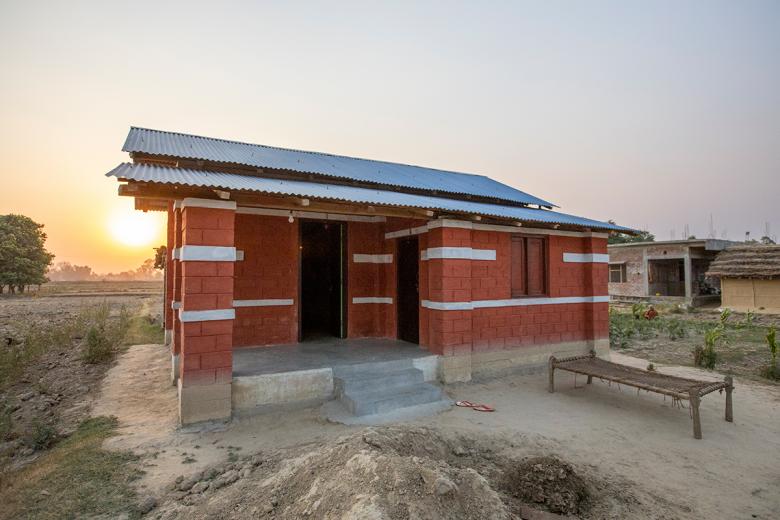Founded in 1976, Habitat for Humanity is a global nonprofit that builds affordable housing in more than 70 countries. Following the “partnership housing” model developed by Habitat co-founders Millard and Linda Fuller and Clarence Jordan, Habitat home owners work with a team of volunteers to construct their home and pay an affordable mortgage. Since its inception, the nonprofit has provided shelter to more than 39 million people worldwide.
Nepal is one of the dozens of countries in which Habitat maintains an active presence. Understanding that almost half of all people in Nepal live in substandard housing, Habitat has been exploring innovative methods to increase access to better and more affordable shelter. Habitat for Humanity Nepal is active in 11 communities, including Sunsari and Morang, and provides additional services such as youth and vocational training, government advocacy, and housing finance assistance.
Below is a closer look at Habitat Nepal and how it is helping to improve living conditions for Nepalis.
The State of Housing in Nepal
While it’s difficult to gauge the true scale of housing inadequacy and demand in Nepal based on the available data, the UN-Habitat projected best- and worst-case scenarios for the housing deficit as of 2021. Its best-case scenario was a deficit of 329,711 houses and dwellings, while its worst-case scenario was 434,930. The UN-Habitat also noted, in its Nepal Urban Housing Sector Profile, that more than 70 percent of the homes in urban Nepal are owner-built and, as of 2010, nearly 30 percent were made from semi-permanent (stone and sunburnt brick) or delicate materials (wood or bamboo).
These types of non-permanent homes are even more common in the rural areas in which Habitat for Humanity Nepal works. Bamboo, which is one of the most common building materials for families with low incomes, isn’t strong enough to withstand earthquakes or harsh weather events.
The Garamlal family’s shelter in the Baradashi Rural Municipality of Jhapa is representative of the housing conditions in rural Nepal. In a blog post, Habitat for Humanity Nepal wrote that the elderly married couple’s sticks and thatched house had crumbling walls and was without a proper door or adequate roofing. The couple, like others in rural Nepal, have low economic opportunities and survive on less than $5 per day in daily labor work.
Habitat’s Recent Impact
Habitat for Humanity Nepal builds hundreds of homes in rural Nepal each year. Through the first six months of the fiscal year 2022 (July 2021 to December 2021), Habitat Nepal constructed 285 homes. It also provided assistance to its microfinance partners in awarding 13,182 new housing loans and trained 752 people in safe shelter and financial literacy. The organization also partnered with the MetLife Foundation to facilitate food donation deliveries in rural areas. This allowed families and volunteers to spend more time building their homes as opposed to having to search for food and work.
During the fiscal year 2021, Habitat Nepal built 585 homes and provided nearly 37,000 families with housing financial services.
Innovative and Low-Cost Cement Bamboo Housing
On its own, bamboo isn’t a reliable building material to protect against strong winds and extreme weather events. However, a new technology is making bamboo homes more resilient and safe for people living in Nepal’s Eastern Terai region. These homes are built with specially treated bamboo and cement plaster in an innovative method known as cement bamboo frame technology. Partnering with the Hilti Foundation, which funds the creation of cement bamboo frame technology, Habitat Nepal is working to scale the building method throughout Nepal and the Philippines.
“Bamboo is one of the only building materials that low-income families can afford to build with,” notes Habitat Nepal program director Yuban Malla. “Given their financial constraints, they build with untreated bamboo that does not have much structural stability. These families often reside in disaster prone areas, and they are not only affected by heavy winds and fires but are also the first to be hit by floods.”
Because they have less mass, homes built using the cement bamboo frame technology are more resistant to earthquakes, while the building process is more sustainable and not as harmful to the environment as conventional construction systems. Habitat Nepal is also working with various partners to make this building method a self-sustaining industry in Nepal. This could create job opportunities in agriculture, construction, and bamboo treatment centers.
Housing Finance Solutions
Habitat Nepal has helped thousands of families in Nepal secure housing loans in recent years. Specifically, it works with local non-governmental organizations to improve Nepal’s housing microfinance sector and allows rural families with low incomes to more easily acquire housing loans. It also maintains a relationship with the government in Nepal, working to secure government housing funds for marginalized populations as well as those in disaster areas.
As an example, Habitat Nepal helped Morang resident Dukhni Devi qualify for a $1,000 housing microfinance loan from Jeevan Bikash Laghubitta to buy a plot of land and build a home. This not only provided her with safe shelter, but gave her a space to operate her tailoring business, through which she now earns more than $330 per month. Habitat Nepal has been offering microfinance loan assistance since 2009.

